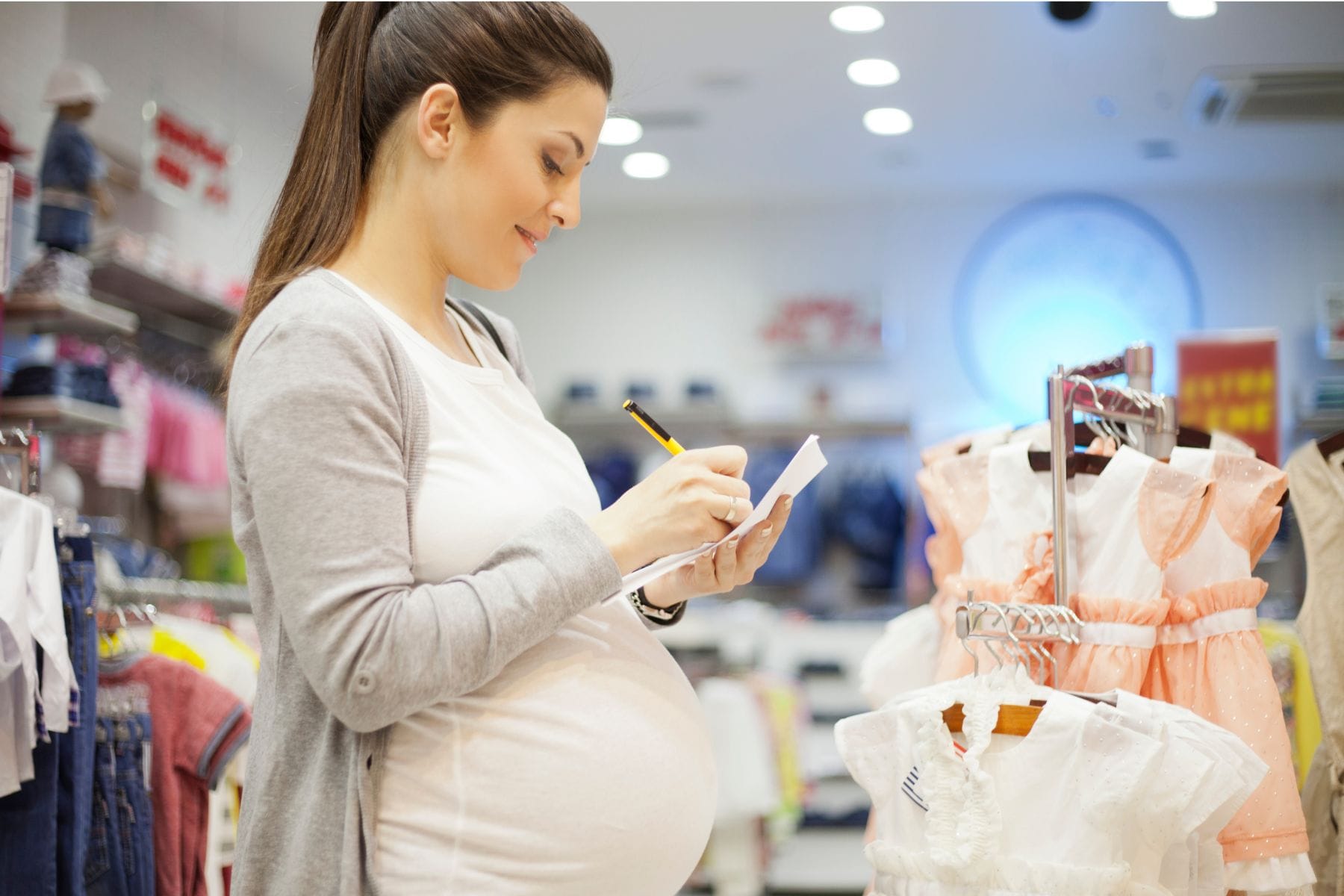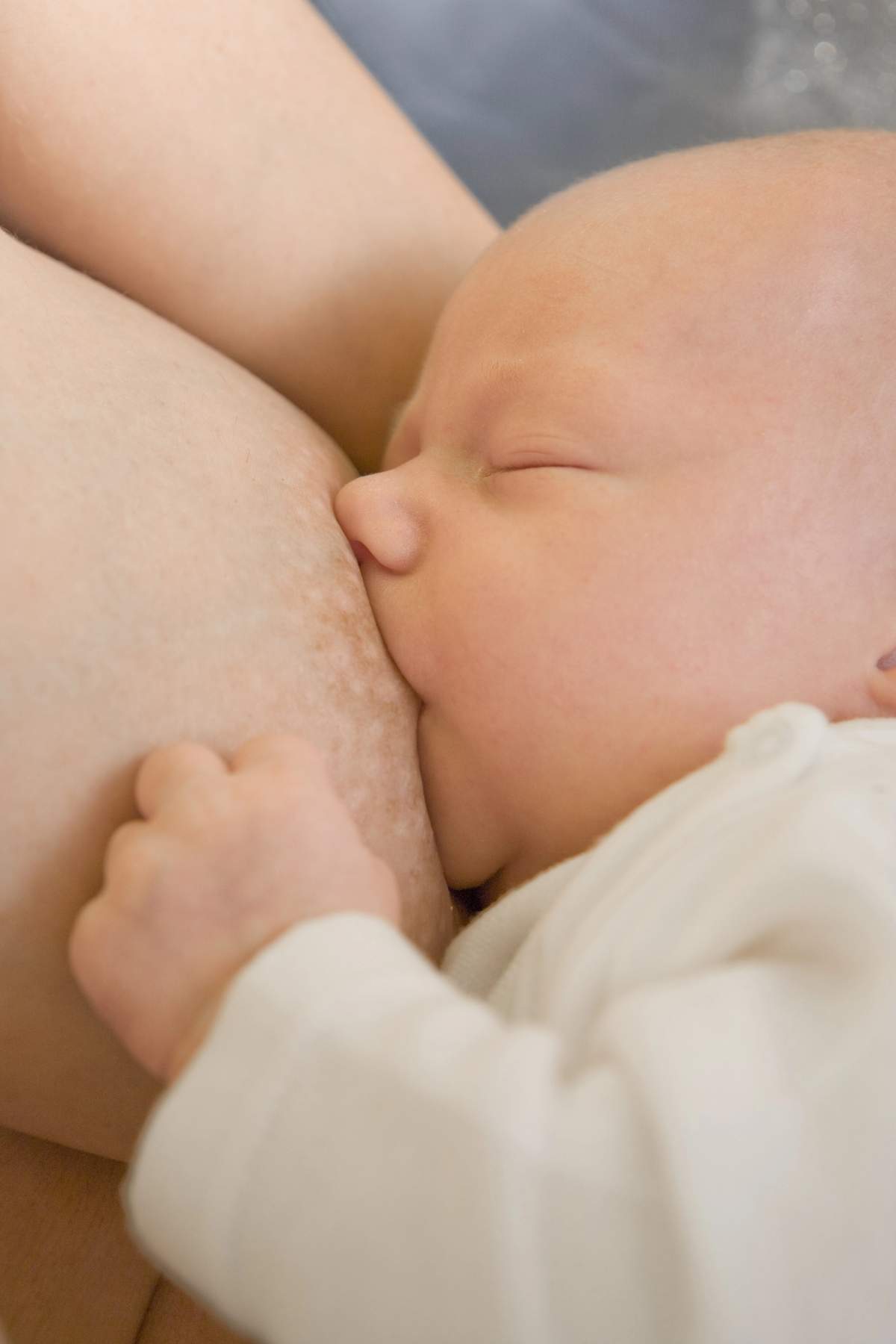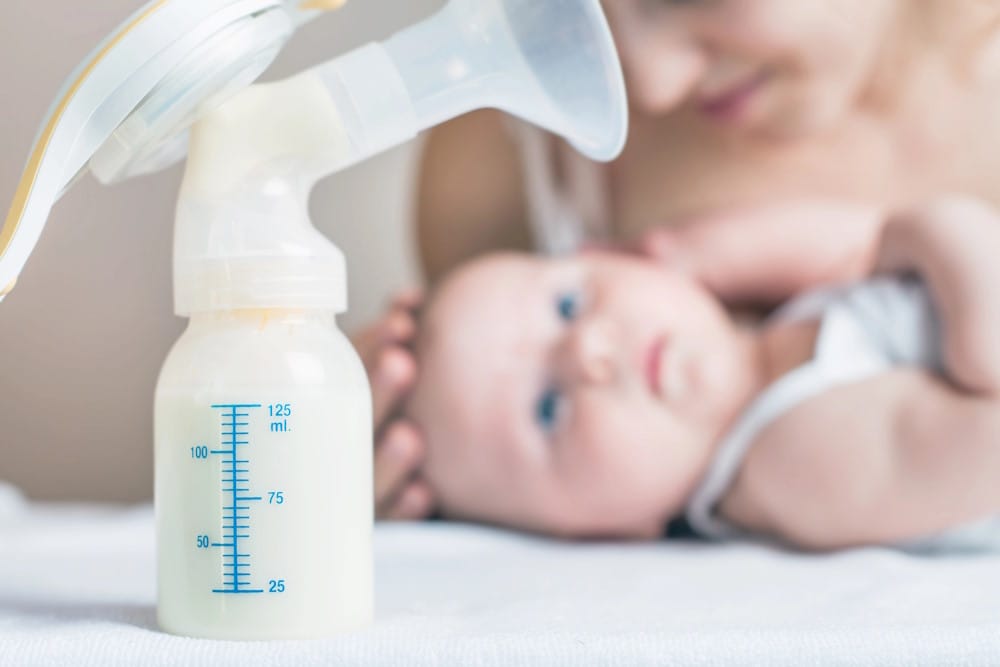How long can you store your breastmilk?
So you’ve worked hard making and expressing your breast milk, but now what? If you are not using your expressed milk for your baby immediately you need to consider how best to store it. This will largely depend on when you plan to use it.
I will give you the specifics on breast milk storage below but I generally find the easiest way to remember how to store your breast milk is 5, 5 and 5.
5 hours at room temperature
5 days in the fridge
5 months in the freezer
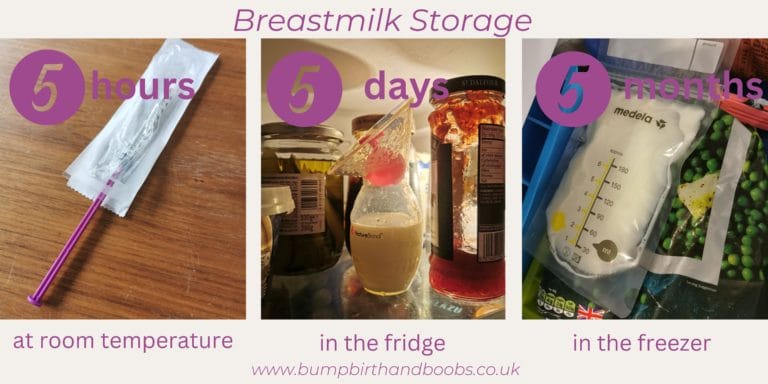
Breastmilk storage
guidelines for healthy, term babies
If your a detail person and your baby brain can accommodate more than 5 /5/ 5 then see the below information.
- Room temperature (less than 26℃) for 6 hours
- Cool bag with ice block for 24 hours – protect your milk from direct contact with the ice block
- Fridge for 8 days (4℃ or lower, store in the back of the fridge, not in the door). If you are unsure of the fridge temperature then store for up to 3 days.
- Ice compartment for 2 weeks
- Freezer for 6 months (18℃ or lower)
Breastmilk storage guidance from the NHS can be found here.
Sign up for free tips and advice
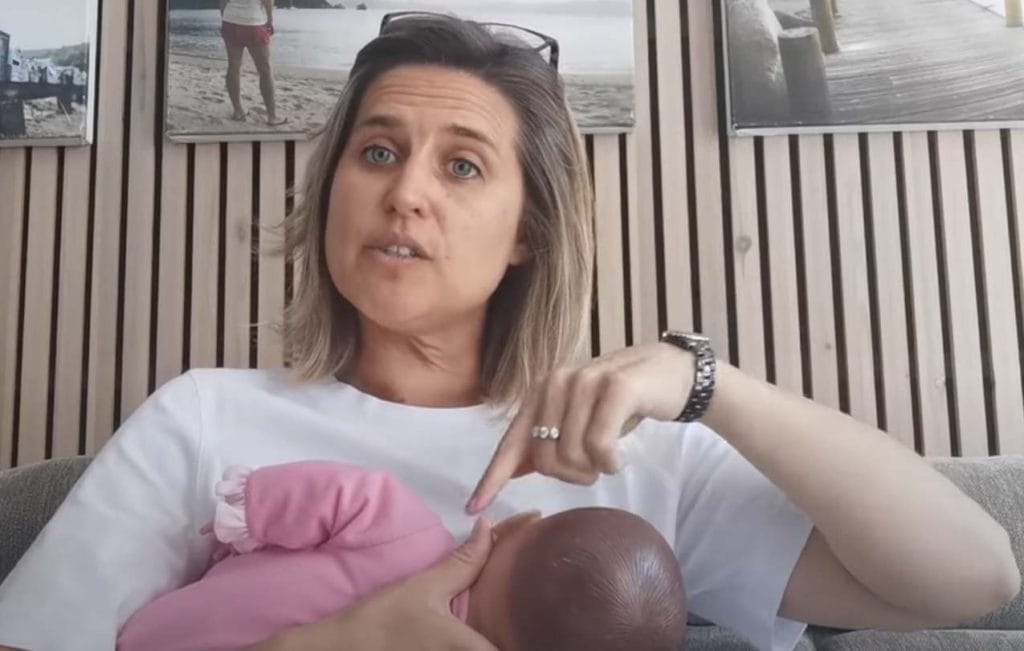
Get my video guide to
breastfeeding positions
Plus
just for signing up
Tell me when your baby is due or when they were born so that I can send you the most relevant tips
What to store your Breastmilk In?
You can store your expressed milk in any clean or sterile container.
If you plan to freeze your milk I suggest to avoid waste that your store your milk in small quantities such as 30ml or 60ml / 1oz or 2 oz.
This will enable you to defrost the amount that you need rather than having to defrost and discard milk.
If you are using a breastmilk storage bag then take note of the volume of milk prior to tipping it into the bag as the measurement marks on bags are generally inaccurate. I would then recommend initially freezing the bags flat as this will enable you to store the milk more easily. You can also store milk in a clean plastic or glass container.
However you store your milk you should date the container and mark the quantity of milk. You are aiming to use the oldest milk first.
Combining Breast Milk
If you plan to combine breast milk that has been collected during the day or over a number of days then you should always cool the milk to the same temperature as the coolest milk. Milk that you express comes out at body temperature so will be much warmer than milk that has been left at room temperature or in the fridge.
This might be milk that has been actively pumped, collected using a silicone let down pump or caught using a breast shell. Place this expressed milk in the fridge to cool. When you have collected more milk place that in the fridge in its own container. Only when both milks have cooled to the same temperature should they be combined. These milks should be dated with the date of the oldest expression of milk.
If the milk has separated a little prior to pouring it into another container then I suggest you swirl the milk in the container rather than shake it as this can damage the live components of breast milk.
Thawed Breasmilk
You can thaw frozen milk overnight in the fridge or in cool water.
You should never refreeze any previously thawed milk
Your baby may prefer your milk is warmed. You can warm your milk in tepid water if desired before feeding either by running under warm water or placing the container in a basin of warm water.
Breastmilk defrosts very quickly, especially when stored in small quantities. You should not microwave milk in order to defrost it. There is danger of scalding and damaging the nutrients in your milk.
Thawed milk should be stored in a fridge for 24 hours and then discarded. If you do not have access to a fridge, say if you are travelling, you can use a cool bag with an ice pack for 24 hours.
It is likely your milk will have separated when stored or thawing. To mix it, gently swirl your milk in the bottle or the container, do not shake it.
Always check the temperature of the milk on the inside of your wrist prior to feeding it to your baby. The milk should feel neither hot nor cold.
Leftover Breastmilk
There is very little evidence about the safety of keeping leftover breast milk after it has been offered to your baby from a bottle / cup. Some authors suggest it is ‘probably safe’ to refrigerate the milk and offer it again within 1 to 2 hours.
What you have to consider is the exposure with the bacteria from the child’s mouth where it has been in contact with the bottle teat.
I would be more inclined to save freshly expressed breastmilk for an hour or two as it will contain greater amounts of antibodies and protective factors than previously frozen milk.

